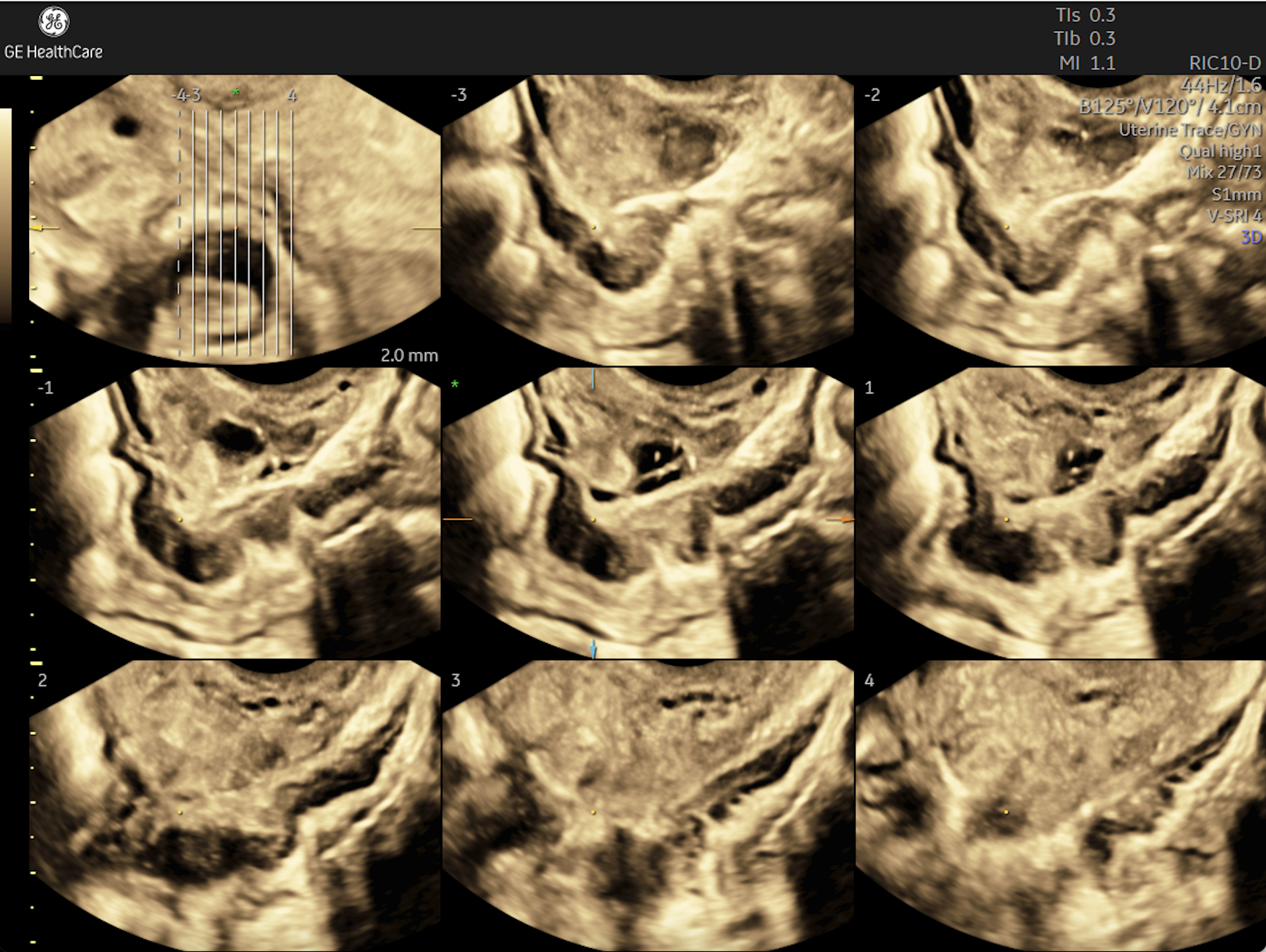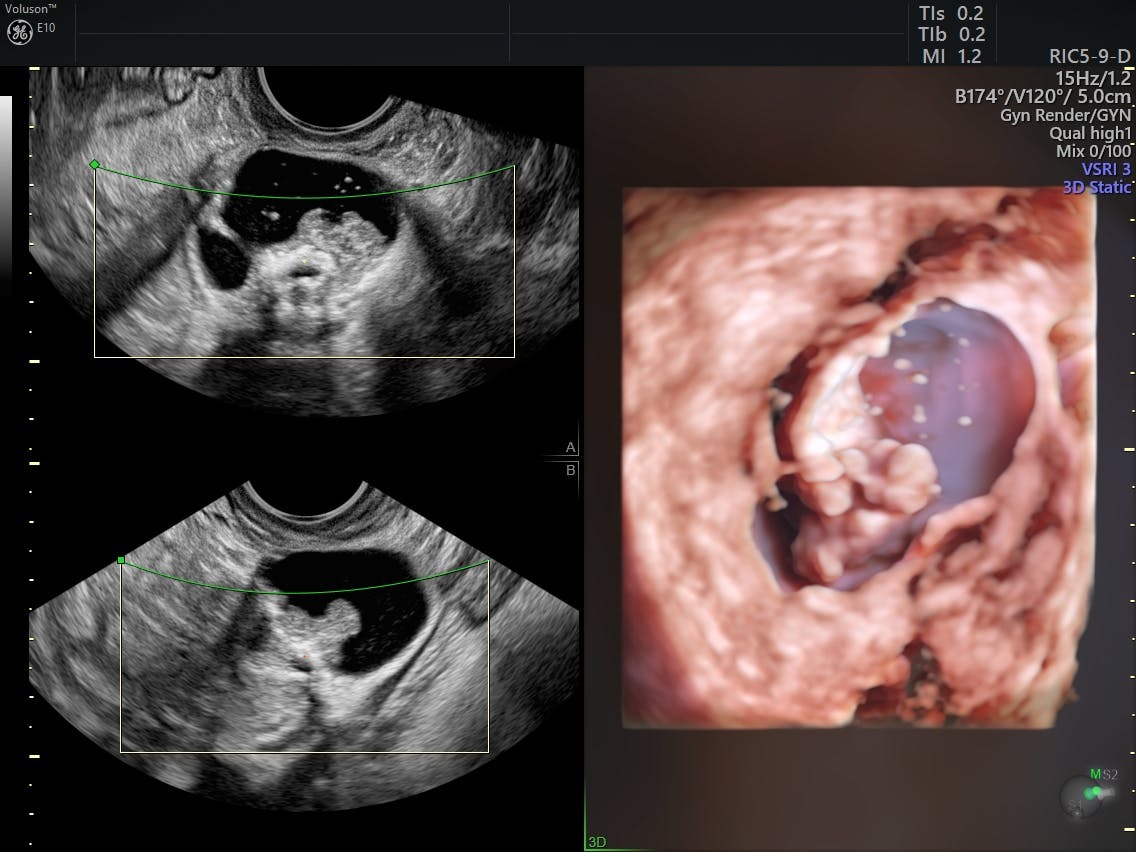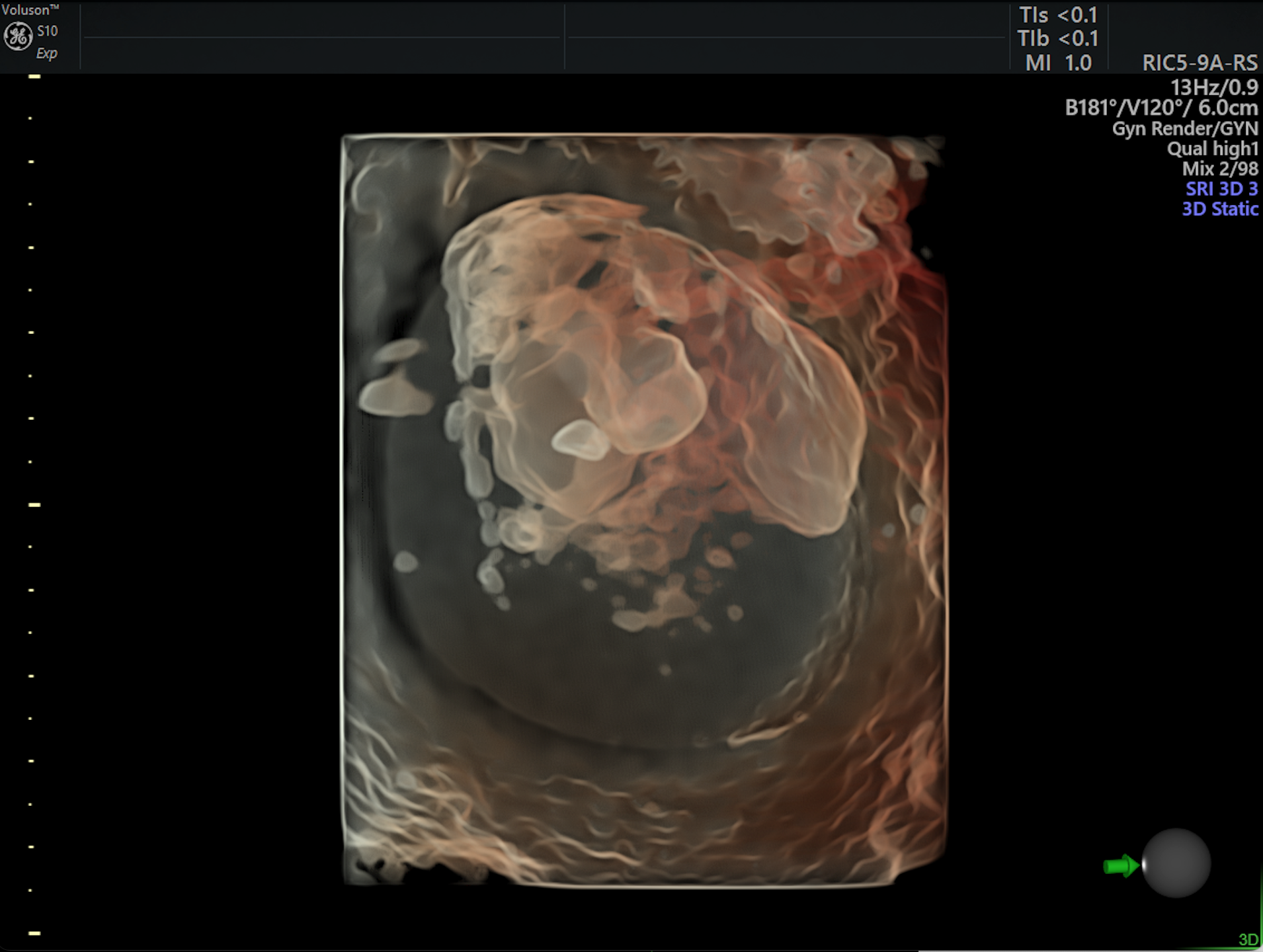Adolescent pelvic pain is a prevalent, intricate clinical challenge, often requiring a multifaceted approach for accurate diagnosis and effective management. This article aims to provide clinicians with valuable insights into the role of ultrasound as a crucial diagnostic tool in evaluating pelvic pain in adolescent girls.
Causes of Pelvic Pain in Adolescents
Chronic pelvic pain (symptoms lasting longer than six months) is a common complaint among adolescent girls, suggesting a spectrum of conditions with diverse etiologies. Causes of pelvic pain in this age group range from benign menstrual-related disorders, such as primary dysmenorrhea, to more complex issues involving the gastrointestinal and urinary systems.
Gynecologic sources of chronic pelvic pain include:
- Menstrual-related disorders, such as dysmenorrhea or endometriosis
- Obstruction of the reproductive tract secondary to anatomical abnormalities
- Adnexal cysts or masses
- Pelvic inflammatory disease
Endometriosis, in particular, is underdiagnosed in adolescent girls, who wait three times as long to be diagnosed when compared to their adult counterparts, according to a 2024 piece in Obstetrics and Gynecology.
Secondly, obstructive reproductive tract anomalies may present with pelvic pain or primary amenorrhea. These anomalies include conditions such as imperforate hymen, transverse vaginal septum, or noncommunicating horns associated with Mullerian tract abnormalities.
The third gynecologic source, adnexal cysts, can present with both chronic and acute pain, and may arise from the ovary or the tube. Cysts less than 4 cm rarely produce symptoms. Pathologies include functional cysts (e.g., ruptured or hemorrhagic corpus lutea) as well as nonfunctional cysts (e.g., endometriomas, teratomas, and serous or mucinous cystadenomas). Rarely, malignant tumors can be encountered in adolescents, especially germ, granulosa, or epithelial cell tumors.
Finally, adolescents who have had pelvic inflammatory disease (PID) may also have acute or chronic pelvic pain; the 2011 PEACH trial found that 30% of patients treated for PID developed chronic pelvic pain.
Important non-gynecological causes of pelvic pain include gastrointestinal disorders (e.g., irritable bowel syndrome (IBS) and interstitial cystitis (IC)) and musculoskeletal disorders (e.g., abdominal or pelvic floor myalgias). Acute pelvic pain should also remind the clinician of other etiologies, including appendicitis, ectopic pregnancy, and ovarian torsion.
The Role of Ultrasound in Diagnosing Pelvic Pain in Adolescents
A careful history and physician examination is invaluable in determining the source(s) of pain in an adolescent patient, as well as its timing, cyclicity, and localization. Establishing any relationship to menses, activities, diet, positions, activities, and stress can provide important clues. Physical exam helps evaluate trigger points, presence of hernias, and palpable fullnesses or masses. Clinicians should recall that severe pelvic pain in young girls is also associated with a history of sexual abuse.
In the evaluation of adolescent pelvic pain, ultrasound emerges as a first-line, non-invasive diagnostic tool. Its advantages include safety, accessibility, and the ability to provide detailed images of pelvic anatomy.
Importantly, conducting ultrasound examinations in adolescents requires a sensitive and patient-centered approach, given the potential for anxiety and discomfort in this demographic. Clinicians should establish clear communication with the patient and, when appropriate, involve parents or guardians in the discussion to alleviate concerns.
Key Techniques for Conducting Pelvic Ultrasounds in Adolescents
The two main pelvic imaging techniques are transabdominal and transvaginal ultrasound. Transabdominal ultrasound involves placing the transducer on the abdomen, providing an overview of pelvic structures. Clinicians often prefer this method as an initial approach due to its non-invasiveness. However, transvaginal ultrasound, which involves inserting a probe into the vagina, offers a more detailed and direct visualization of pelvic organs, particularly the uterus and ovaries. Healthcare providers can also sometimes conduct this exam transperineally.
The choice between transabdominal and transvaginal ultrasound depends on the patient's symptoms, medical history, and comfort level. While non-invasive pelvic imaging utilizing transabdominal ultrasound is suitable for initial assessments, transvaginal ultrasound may be necessary for a more comprehensive evaluation, especially when assessing the ovaries and detecting subtle abnormalities. Specifically, if endometriosis is suspected, a transvaginal ultrasound evaluates the ovaries more thoroughly, and may reveal deep infiltrating endometriosis near the uterosacral ligaments or in the muscularis layer of the rectum.

Deep infiltrating endometriosis seen on Voluson™ using Uterine Trace
Ultrasound allows clinicians to exclude many important etiologies, including uterine anomalies, adnexal masses, ovarian torsion, and reproductive tract obstructions. It can also easily identify tuboovarian abscesses or tuboovarian complexes. However, ultrasound is limited in detecting superficial peritoneal endometriotic lesions.

3D rendered adnexal mass seen on Voluson™ ultrasound
Using Ultrasound to Guide Management Strategies
Depending on the ultrasound findings, management strategies may range from conservative approaches, such as pain management and hormonal treatments for endometriosis or dysmenorrhea, to more invasive options, including surgical interventions for adnexal masses or deep infiltrating endometriosis. For instance, the identification of ovarian cysts may prompt a conservative "watchful waiting" approach, with repeat imaging. More severe cases, such as torsion, may necessitate immediate surgical intervention.

3D rendered ovarian cyst seen on Voluson ultrasound
Limitations and Benefits of Ultrasound for Adolescent Pelvic Pain
While ultrasound does much to support diagnoses of adolescent pelvic pain, clinicians must be aware of its limitations. Critically, though this tool provides valuable information about pelvic anatomy, it may not always reveal the full clinical picture. Therefore, a comprehensive clinical evaluation, including medical history, physical examination, and laboratory tests, should complement ultrasound findings to ensure an accurate diagnosis and appropriate management plan.
In conclusion, ultrasound plays a pivotal role in evaluating pelvic pain in adolescent girls, offering a non-invasive and detailed imaging approach. Clinicians should consider the prevalence and diverse causes of pelvic pain in this age group and utilize a sensitive approach to conducting ultrasound examinations, considering both technical aspects and patient comfort. Finally, ultrasound findings should guide further management and precede a comprehensive clinical evaluation. By incorporating ultrasound effectively, clinicians can enhance their ability to diagnose and manage pelvic pain in adolescent girls, ultimately improving patient outcomes and quality of life.




